
Your coach is there to guide you. With that being said, do not hesitate to ask any questions or concerns you may have. Your success is what keeps us going. Please let us know any concerns at all that you may have, even if they are not fitness related. Your coach is there to help you suceed in all aspects of your life, starting with fitness.
Weigh Ins
Weigh ins should be performed on a DAILY basis and recorded in your workout platform (Trainerize)
Weekly Progress Report
The Weekly Progress Report should be completed the same day every week (we recommend Saturday morning to keep you on track). The weekly report contains a summary of your week, it includes your weekly photos, your MyFitnessPal diary link*, a summary of your week, and your most recent photos.
www.MyFitnessPal.com –> Settings –> Diary Settings. Scroll down to ‘Change diary settings’ and copy the link. Make sure Diary Setting is shared publicly, or locked with a key that is provided in the weekly progress report.
Photos
Photos are included in your weekly progress report and should be taken and sent once a week with this report.
Measurements
Measurements should be recorded every Friday in your workout platform (Trainerize)
Cardio
When you are prescribed a cardiovascular routine, it should be performed on days you do not weight train (if possible). If cardio is performed on the same day, it should never be done directly before weight training. Stretching is not required prior to a cardio session and it is argued that stretching prior to cardiovascular exercise can increase the likelihood of injury. It is recommended to use a heart rate monitor to track calories burned. Most machines have these readily available.
High Intensity Interval Training (HIIT)
HIIT cardio is the go-to cardio recommendation that will be prescribed to most clients. HIIT can help raise your metabolic rate so that you burn more calories throughout the day, as opposed to just burning more calories in the single cardio session. Doing hours on top of hours of endless cardio is old news, and new research suggests HIIT is more beneficial in providing long term fat loss and a boosted metabolic rate.
Moderate Intensity Steady State (MISS)
MISS cardio can be beneficial when combined with a well balanced training routine to allow you to burn a few extra calories in a given day. If you’re already performing several HIIT sessions and need to burn some extra calories, MISS may be recommended to slightly increase the calories you are burning in a given day.
Nutrition
A macro-nutrient approach is used for all nutrition plans in order to have the greatest impact on body composition. More commonly known as ‘flexible dieting’ – a macro-nutrient approach doesn’t limit the types of food you can eat on any given day, instead, you are given an allotted amount of protein, fats, and carbohydrates that you make up from the foods you eat in a given day.
Food Scale – A digital scale must be purchased, and all food items should be weighed in grams for the most accurate accounting of macro-nutrients.
Supplementation – Supplements that contain macro-nutrients must be counted. If you take 1 gram of fish oil, count that as 1 gram of fat. If you take a protein supplement that contains 7 grams of BCAA’s, count that as 7 grams of protein.
Fruits & Vegetables – Get at least 3 servings of fruits and vegetables per day. Micro-nutrients (Vitamins & Minerals) are just as important as macro-nutrients.
Eating Out – Do your best to consume foods that can be account on MyFitnessPal. If you cannot, please let me know and I will adjust your macro-nutrients for that day accordingly.
Macro-nutrients will be adjusted on a weekly basis to allow you to continue progressing. Remember, as your body composition changes, your nutritional intake will need to change as well. For example, the most muscle you carry, the more fuel your body needs to preserve that muscle and to keep you anabolic.
As far as the flexible dieting, whole foods should still consist of the majority of your nutritional intake. Flexible dieting doesn’t limit you as to WHAT you eat, and it gives you an outline as to where the majority of your food should come from. It doesn’t limit the types of food you can fit into your nutritional plan, though. Crash diets take away things (No more X, Y, and Z). Successful nutrition plans add things (Eat whatever you want) and give you guidelines to follow which will determine your success.
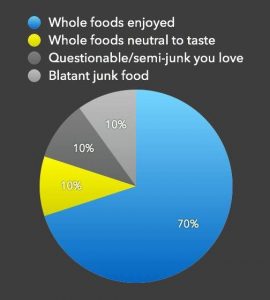
Recording Macro-nutrients
Recording of macro-nutrients is very important in your individual success. If you do not measure and report your caloric intake properly, you will not make optimal results. Under reporting of calories is very real, and happens very often. People wonder why they can’t lose or gain weight while ‘eating so much’ or ‘so little’ where in fact they have no idea how many calories they’re actually consuming unless they were to measure their food and count it!
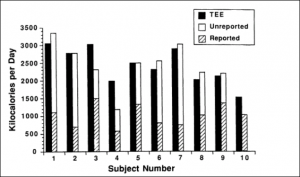
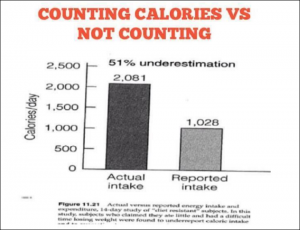
Nutrient Timing
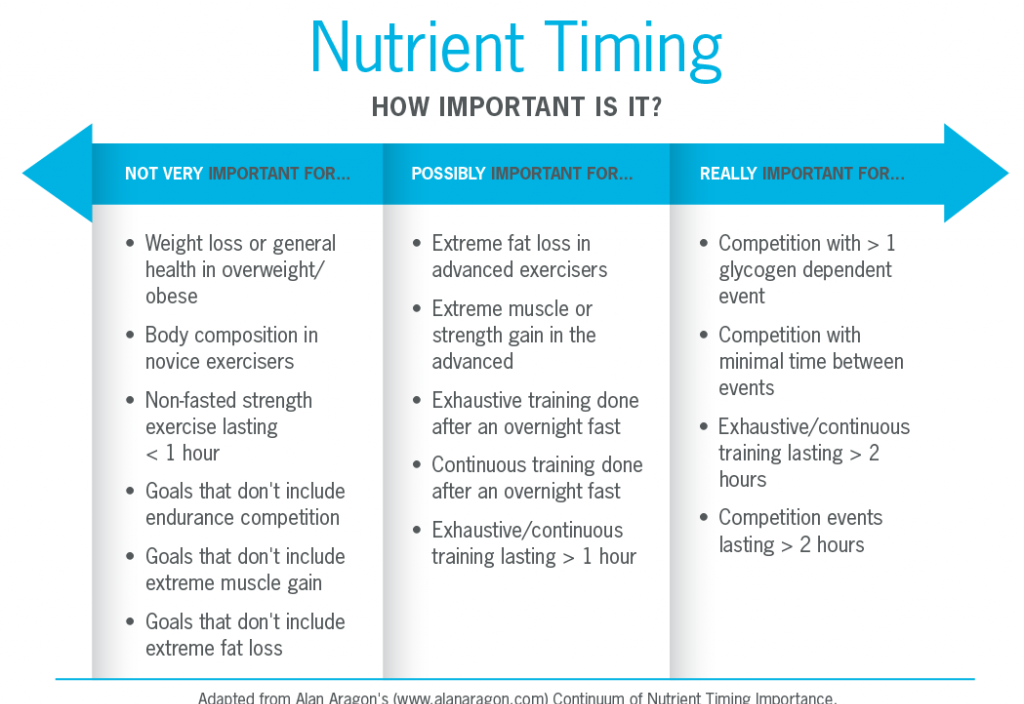
Reverse Dieting
Your body is always trying to maintain homeostasis. With reverse dieting, the goal is to increase the amount of calories you can eat at ‘homeostasis’ – That is, maintaining your weight based on the amount of calories you’re consuming. Reverse dieting is a good way after coming off of a cut to increase your total calories consumed without gaining weight. Macro-nutrients are altered on a daily basis and slowly increased day over day and week over week until you are able to consume substantially more of each macro-nutrient without putting on body fat.
Weight Fluctuation
Weight fluctuation is normal from day to day based on the foods you eat, water retention, hydration, etc. Your weight should not be that important. We are more concerned with body composition rather than scale weight. The scale weight is used to track trends over time in order to gauge how to adjust macro-nutrients.
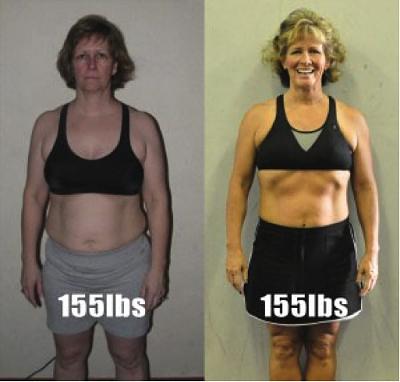
Supplementation
Most supplements are useless. The supplementation industry is a multi billion dollar business revolving around mindless consumers looking for a ‘get fit quick’ scheme. Stick to the supplementation guide and the recommended supplements YOU Should take from the guide based on your individual goals. The supplementation guide will provide real scientific data behind the supplements listed and how they can benefit you.
Workout Routine
Your workout routine will be posted through Trainerize, an application that allows your trainer to directly upload, update, and modify your workout routine. Be sure to download the app on your phone so you can track your workouts on the go.
Eccentrics – The negative half of the lift (when lowering the weight to your chest on the bench press, for example) is just as important as the concentric (Pushing off your chest in the bench press) phase of the lift. Eccentric movements should account for 1-2 seconds per repetition for every single exercise, unless otherwise noted on the specific training day.
Training Modalities
Power Days – Explosive training allows for the recruitment of type II muscle fibers, which are more susceptible to hypertrophy. On power days, 75-80% of your 1 repetition maximum is used in a lower repetition range, where you focus on moving the weight as fast as possible in an explosive manner.
Hypertrophy Days – These are the bread and butter workouts with the most training volume. These workouts should be done in a slow and controlled manner using 60-70% of your 1 repetition maximum.
Strength Days – These workouts are designed to get you stronger so you can recruit more muscle fibers during your other training sessions. The stronger you become, the more volume you can use in your training to recruit more muscle fibers. These workouts should be done at 85-90% of your 1 repetition maximum.
Rest Between Sets
It takes roughly 2-3 minutes to restore creatine phosphate (CP) and adenosine triphosphate (ATP) pathways in your muscles after performing a set. Take as much time as you need between each set in order to perform the following set with maximum performance.
Progressive Overload
If you do what you’ve always done, you’re going to get what you’ve always got. You need to continue to progress in your training every single workout in order to continue to progress. Your body wants to maintain an equilibrium, and if you want to progress, you must continue to increase the demand on your body in order to continually progress. Lifting heavier weight, more repetitions, or less rese between sets are all examples of progressive overload. You must strive for progress in every workout in order to grow. You DO NOT need to increase the weight on every set in every exercise. This would be too much. Instead, strive for progress in every workout, and don’t overdo it. If you can do more, do it. Strive for progression.
Deloading
Deloading is a useful technique to give your body extra time to recover from strenuous exercise. Training intensity will be lower than a normal workout, however, not so low that you lose strength or muscle mass. Deloads will occur every few weeks, or as needed based on your lifestyle, performance, and progress (more stress in your life may equate to needing more frequent training deloads).
Plateaus
As you make progress in your training, you will come to a point where your lifts will not go up anymore, and you will have plateaued. Plateaus are normal and expected in every training routine. Upon reaching a plateau, take a percentage of your 1 repetition maximum (90%, for example) and reset your lifts to this standard. After the reset, begin to work your way back up to the maximum and attempt to break the plateau the next time around in your training split.
Warming Up
Warming up before strength training is important to get the blood flowing to the muscles where it is needed, as well as prepping your central nervous system for strenuous activity. You should perform a dynamic warm up as well as a few warm up sets prior to beginning exercise.
A preferred warm up scheme:
1 set of 5 repetitions @ 40% of 1RM (1 repetition maximum)
1 set of 5 repetitions @ 50% of 1RM
1 set of 3 repetitions @ 60% of 1RM
1 set of 1 repetition @ 70% of 1RM
Training to Failure
Training to failure is not always necessary, and should not be done frequently. Progressive overload is sought on a long term basis rather than training to absolutely failure on every training set.
Danish sports scientists at the National Research Center for the Working Environment did a study on 15 women performing lateral raises. When women used the lighter weight for more repetitions, training to failure, they noted that their muscles worked more intensely until about 3 repetitions prior to muscle failure, where intensity flattened off.
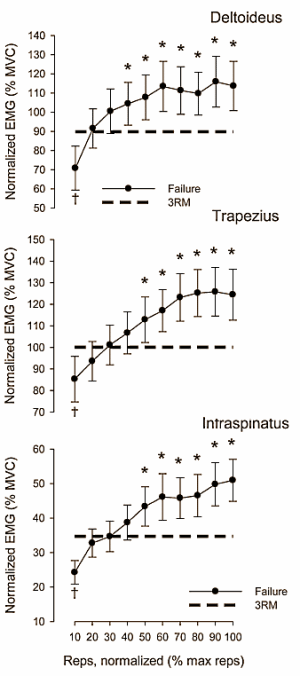
(J Strength Cond. Res. 2012)
Abdominal Training
Most compound movements, such as the squat and deadlift, will work your core. However, ab workouts may be incorporated up to 3 times per week with your assigned program (your trainer will add them in if necessary)
Stretching Post-Workout
It is recommended to static stretch after all exercise to release lactic acid and increase blood flow to the muscle fibers that were worked during exercise. Stretching can also help to alleviate some symptoms of DOMS (Delayed Onset Muscle Soreness).
Optimal Training Principles
All training methods work and will yield results. However, there are ‘good’ training methods, and there are optimal training methods to maximize results. You should seek progression in every workout through the concept of daily undulating periodization (unless otherwise stated by your trainer). In daily undulating periodization, each workout is varied to avoid plateaus in which workouts are divided into power, strength, and hypertrophy days to efficiently recruit more motor neurons in each workout.
Volume: There must be enough volume to stimulate growth in each workout. Volume is defined as the sets and repetitions in a workout.
Intensity: A workout must have a specific intensity to fulfill the training goals of each session. Intensity is defined as a percentage of your 1 repetition maximum.
Frequency: Frequency of training is the key to growth. The more frequently you train, the more volume you are performing which is the key to muscular strength and growth. (Do not mistaken this for over-training. Training optimization occurs when each muscle group is able to fully recover from the previous training session). Protein synthesis is elevated 24 to 36 hours after training and decreases for that body part afterwards. This means that you should then train that muscle again to have the same effect on it. Training each muscle group once a week won’t cut it, so you will train each muscle group at least twice a week to optimize growth through maximizing protein synthesis.
Progressive Overload: You should always seek improvement from the previous workout. Remember, an increase in training volume is key. If you do what you’ve always done, you’re going to get what you’ve always got. If you want to grow, you have to provide the stimulus for your body to adapt to.
Learn
Interested in seeing an article, blog post, or podcast on a specific topic? Contact us and let us know.[/text_block]